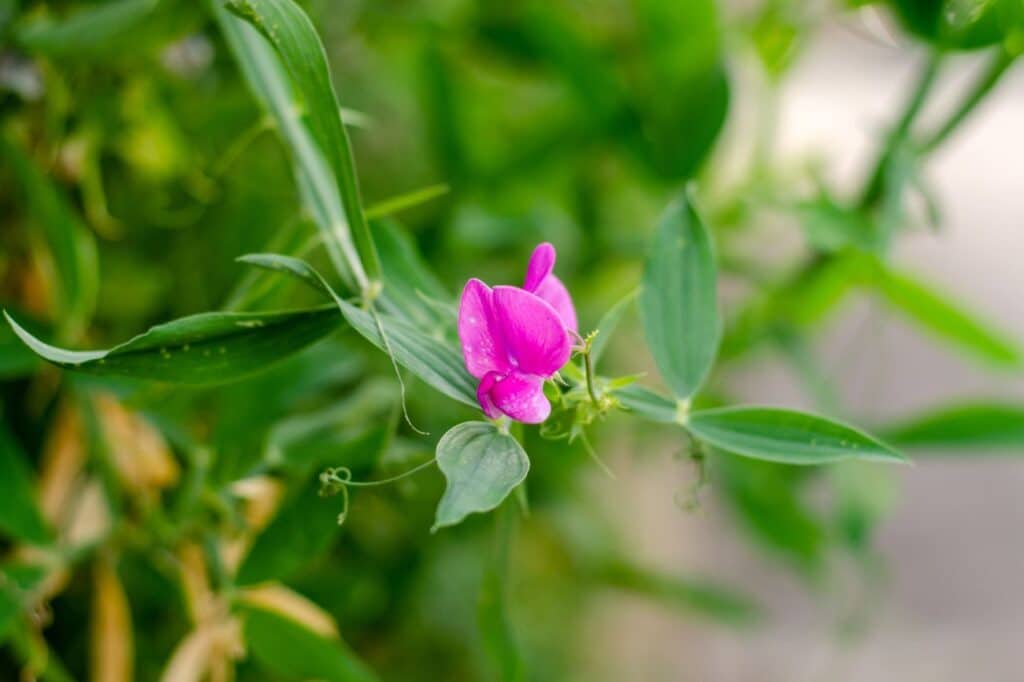Sweet peas (Lathyrus odoratus) are favorites in many garden types because they are beautiful, easy to care for, and help restore the nitrogen levels in the soil.
They are often seen in crop gardens because they can benefit the growth of other plants like fruits and vegetables and attract plenty of beneficial insects with their strong fragrance.
Gardeners also love planting sweet peas in ornamental gardens because they grow and bloom vigorously and fill your garden with sweet scents and lots of bright colors.
Some of the best vine companions for sweet peas include jasmine, clematis, climbing roses, and honeysuckle. But these flowers can also be paired with ornamentals like catmint, marigolds, pansies, and sweet alyssum or vegetable plants like cucumbers, beans, lettuce, or spinach.
In this guide, we will take a closer look at these popular companions and discuss creative ways to use them for a more beautiful and efficient garden.
What to Grow with Sweet Peas
For successful companion planting, pairing plants with similar growing requirements and growing seasons together is always best.
Sweet peas grow and flower best if their foliage receives direct sunlight, but they prefer cool and moist soil. In warm climates, they can be planted in partial shade. They should be planted in well-drained, alkaline soil, and it is best to add some mulch or ground covers like marigolds, pansies, catmint, or sweet alyssum around the base of these climbing plants.
Let’s look at a couple of suitable sweet pea companions you can grow in the same garden bed as these vivid flowers.
Best Vine Companions for Sweet Peas
Sweet peas are happy to share their vines with other climbing plants, and mixing various florals on your fences or trellis can create a very striking border for your garden. Let’s look at the best vine companion plants for sweet peas.
Leather Flowers
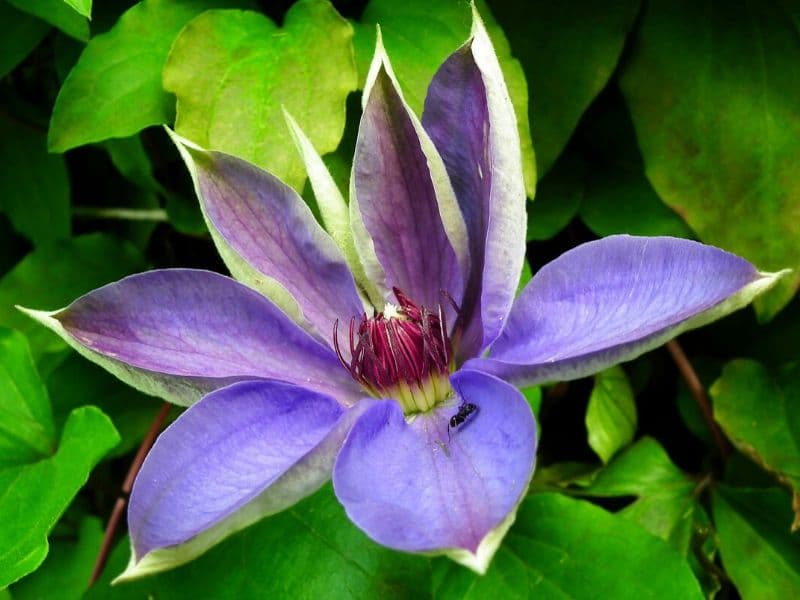
Leather Flower (Clematis), or traveler’s joy, doesn’t grow as quickly as sweet peas, and they do produce larger flowers and foliage. But this evergreen vine plant is a great companion to pair with sweet peas because its larger flowers will add lots of color and texture alongside the smaller sweet pea blooms.
Sweet peas rapidly grow and will quickly spread over your trellis while the clematis slowly catch up. The leather flowers will, however, keep your trellis nice and lush during winter because it is perennial and doesn’t die back for the winter.
This vine plant comes in many flower colors and is ideal for growing showy hedges, borders, or privacy screens in your garden.
Honeysuckle
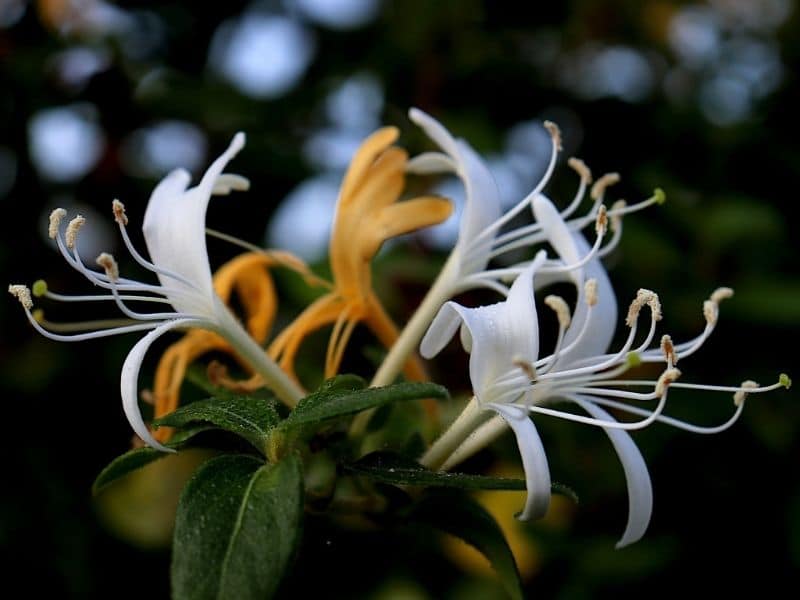
Honeysuckle flowers (Lonicera spp) consist of shrubs and vines. Vine varieties can be good sweet pea companions because they proliferate and quickly cover a large trellis. This vine produces lots of fragrance blooms that are known to attract lots of hummingbirds, bees, and butterflies to your garden.
These vines require some maintenance since they need to be pruned back for winter. This is usually done when the sweet peas have died back. If honeysuckle vines are pruned back, their base can become attractive.
Climbing Roses
Climbing roses (Rosa setigera) or prairie roses can also be good vine companions because they, along with sweet peas, can be used for cut flowers to create beautiful indoor flower arrangements.
These vines come in many different flower colors and require pruning during late winter. These vines are perennials and must be properly trained to form an even growth pattern all over your trellis.
Jasmine
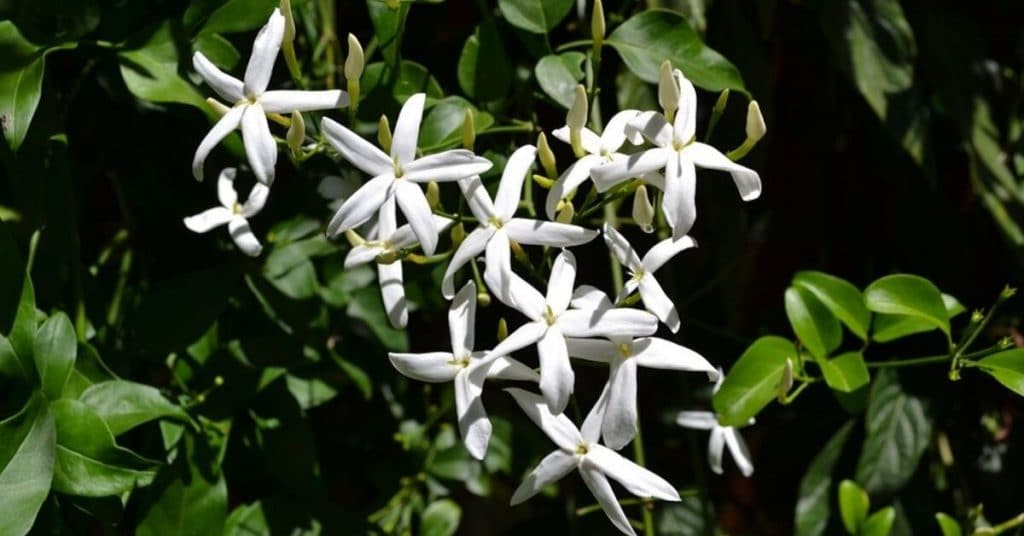
Jasmine (Jasminum) is one of the most fragrant vine plants you can add to your garden, and it is a perfect addition if you want to grow a garden full of sweet scents. The white flowers and dense foliage will make the sweet pea flowers stand out even more.
These plants can be deciduous or evergreen depending on variety and are perfect for creating dense trellis walls with lots of beautiful blooms.
Best Ornamental Companions for Sweet Peas
Lots of gardeners grow sweet peas in ornamental gardens because they can create a striking backdrop for shorter flowering species. Shorter florals can also benefit your sweet peas since they can double as a living mulch to keep the soil around these vines cool and moist for longer.
Here is a quick look at some of the top sweet pea companion plants for ornamental gardens.
Marigolds
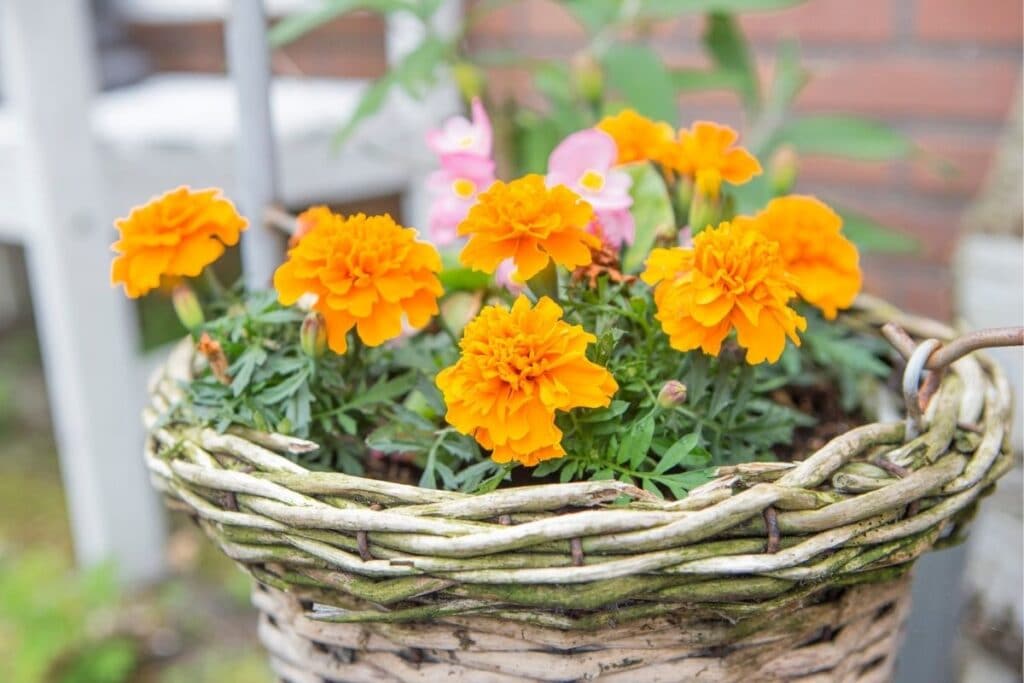
Marigold flowers (Calendula) are common in vegetable gardens because they are known for their powerful protective qualities. Combining these flowers with sweet peas creates organic, pest-free gardens.
Marigolds are great ground covers for sweet peas and will keep the soil cool and moist for much longer. The vibrant blooms of these beautiful annuals will also add lots of color and cheer to your garden.
Pansies
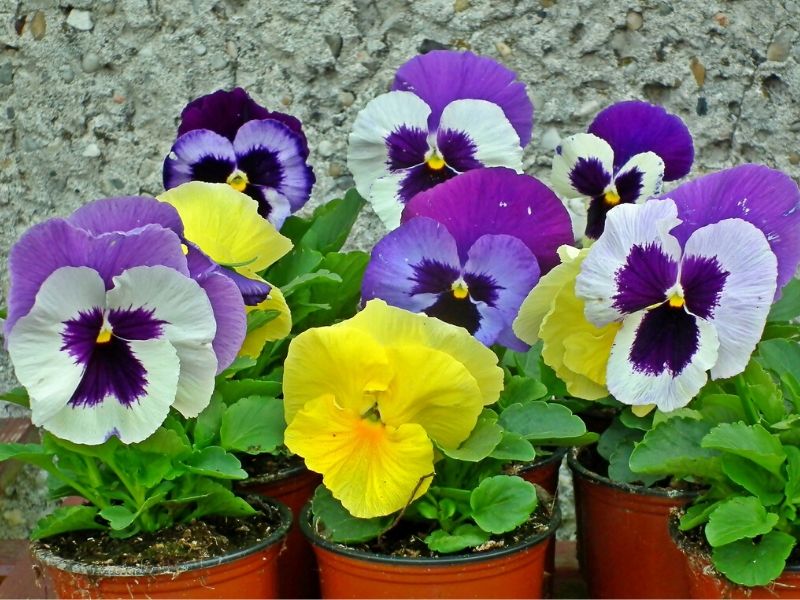
Pansies (Viola tricolor var. hortensis) will look charming around the base of your sweet peas because they have mixed colors that complement the pink, purple, and white tones of sweet peas.
These flowers can act as a ground cover to keep the soil moist and are helpful for keeping weeds from sprouting in your garden. Pansies will also help protect your sweet peas because they act as a trap crop and will lure pests like aphids away from vegetables and other flowering plants.
Sweet Alyssum
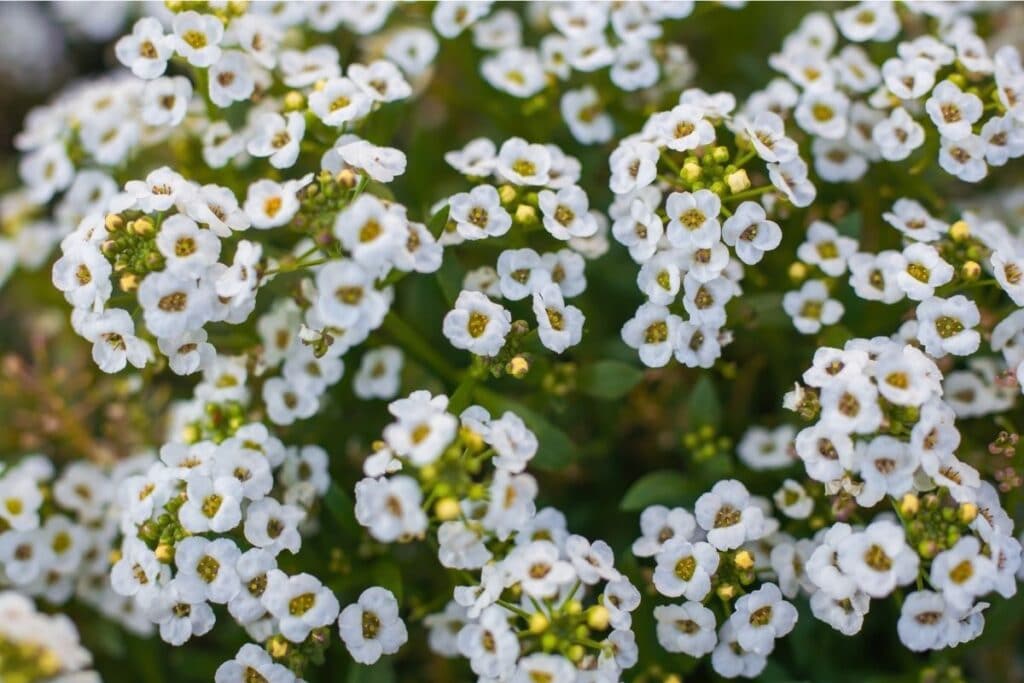
Sweet alyssum (Lobularia martima) typically prefers dryer conditions, but it can also grow in moist soil with lots of sunlight. These beautiful flowers come in many shades of white and purple and are perfect ground covers to grow around the base of your sweet peas.
These flowers are fragrant but not too overpowering and are great for attracting pollinators to your garden.
Catmint
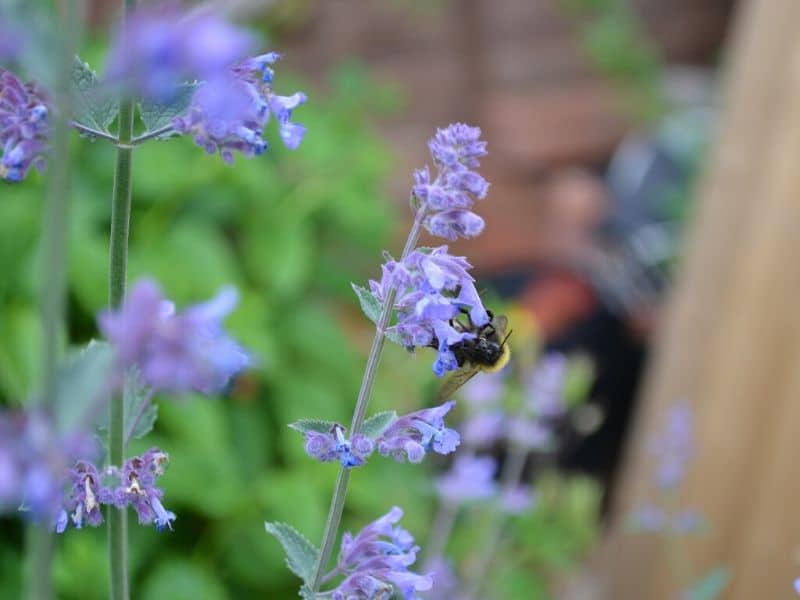
Gardeners love to pair catmint (Nepeta cataria) with sweetpeas because these beautiful shrubs are great garden fillers and double as ground covers. This fragrant herb is often used in crop gardens because they attract pollinators and repel common pests. The velvety leaves and soft purple or white blooms of these plants are also great for adding more color and texture to your garden.
Best Crop Companions for Sweet Peas
Gardeners often include sweet peas in crop gardens because the fragrance of these florals can attract lots of pollinators to your garden. These legumes are also known to improve nutrients in the soil that can boost the growth of other plants.
If you are adding sweet peas to a crop garden then you should be familiar with the appearance of sweet pea seed pods so you won’t mistake them for vegetables and accidentally consume them.
Here is a quick look at some of the best food plants to grow with sweet peas.
Runner Beans and Pole Beans
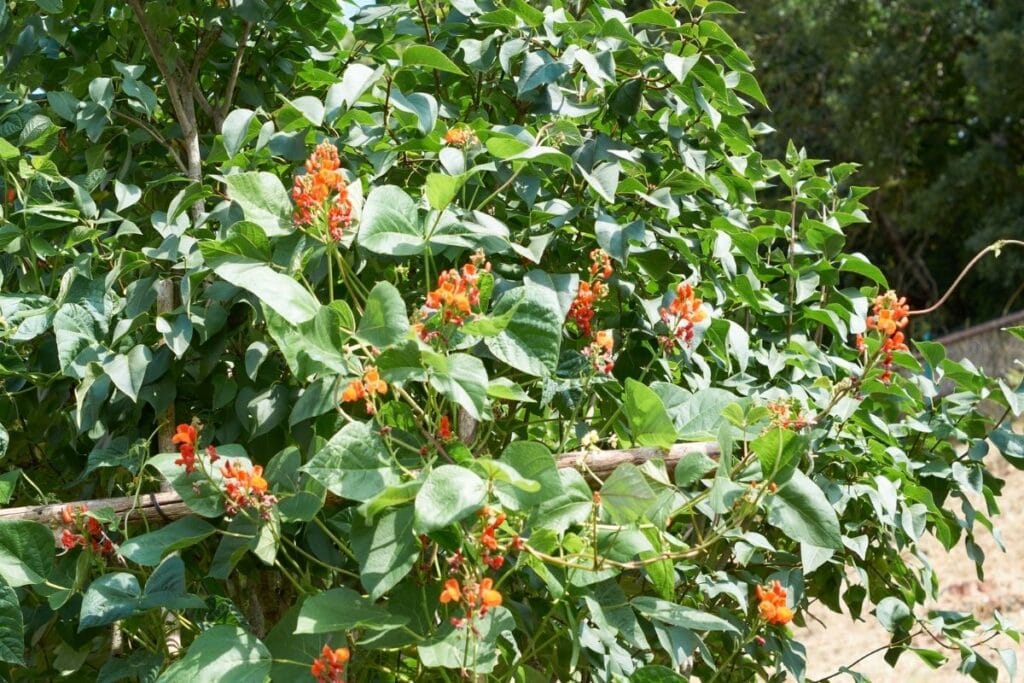
Beans (Phaseolus) are also members of the legume family. Some gardeners don’t like pairing them too closely with other legumes because they can start competing for the same nutrients. But they can be good companions if you give both plants enough space to grow.
You can pair sweet peas with runner beans and trail them up on your trellis since both produce lots of showy flowers. Pole beans can also be grown with sweet peas but won’t offer as many flowers as runner beans.
Cucumbers
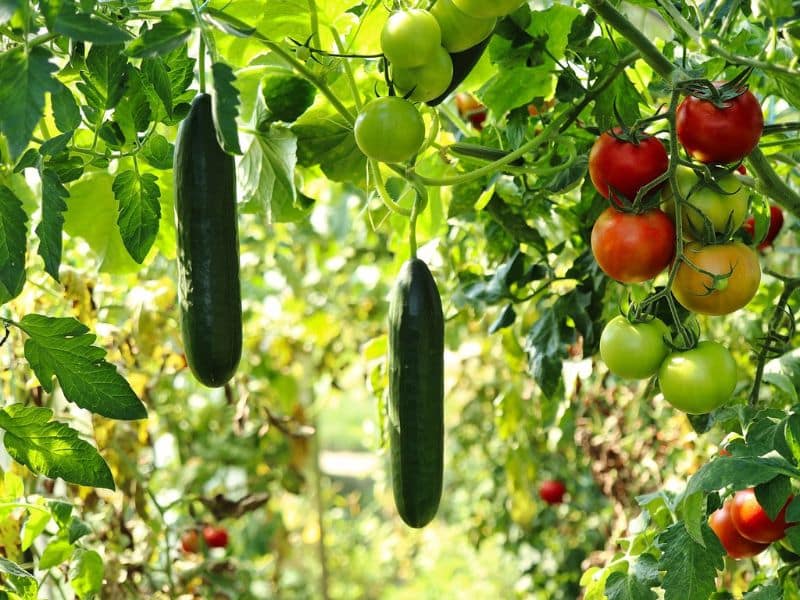
Cucumbers (Cucumis sativus) are good companions for sweet peas because they can also be trellised. The combination of trailing and ornamental plants can be great for filling out and enhancing the aesthetics of your garden fencing.
Related: Cucumber Companion Plants
Lettuce
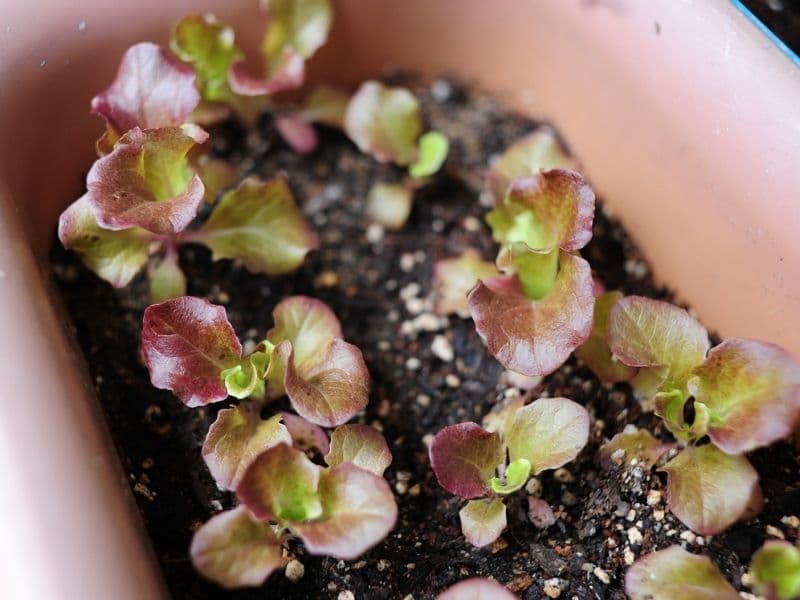
Lettuce (Lactuca sativa) can also be good companions for vine plants like sweet peas because they tend to grow better in partial shade. The vines can protect these delicate foliage plants from harsh sun rays and lettuce will benefit a great deal from the added nutrients that sweet peas add to the soil.
Spinach
Spinach (Spinachia oleracea) is a fast-growing crop that can help keep the soil around the base of your sweet peas nice and moist. Pairing spinach with trellised sweet pea vines is a great way to maximize space since you will create aesthetically pleasing yet functional gardens in less space.
Your spinach will also grow more vigorously since the deep root system of sweet pea vines will draw lots of nutrients closer to the shorter root system of spinach.
What NOT to Grow with Sweet Peas
Sweet peas are toxic to humans and animals but their seed pods do look quite similar to that of edible peas. To stay on the safe side, it is best not to grow this plant right next to edible peas. If you are not exactly sure how to distinguish between the seed pods of sweet peas and other legumes then it might be best not to grow any edibles next to these flowering species at all.
Sweet peas are also poor companions for shade-loving plants like begonias, ferns, peace lilies, and anthuriums since these ornamentals will while in direct sunlight.
Landscaping Ideas for Sweet Peas and Companions
Sweet peas are beautiful vine plants that can be used to create all sorts of showy garden spaces. Here is a quick look at some of the best ways to use these charming annuals.
Crop Garden Borders
You can use your sweet peas to grow a beautiful vine border on the fence around your crop garden. This border will attract more pollinators to your garden and will mask the scent of some of the vegetables in your garden.
Cutting Gardens
The long flowering stalks of sweet peas can be cut and placed in vases to create beautiful flower arrangements. You can grow these and other beautiful florals like marigolds, catmint, and sweet alyssum to create showy indoor bouquets.
Layered Garden Beds
In ornamental gardens, you can create a layered garden effect by trailing vine plants like jasmine and sweet peas on a trellis with some garden fillers like pansies in the middle. This type of pairing will create a layered effect with lots of blossoms and texture.
Final Thoughts
Sweet peas can brighten up any garden space with their colorful flowers and their sweet fragrance will lure plenty of beneficial insects to your garden.
These vine plants can be used to create showy borders or living walls if you combine them with other flowering vines like jasmine, clematis, climbing roses, or honeysuckle. They will grow especially well if you add a flowering ground cover like marigolds, pansies, sweet alyssum, or catmint in front of or around the base of the vine and many gardeners love to use them in crop gardens along with cucumbers, spinach, beans, and lettuce.
We hope that you enjoyed our companion planting guide and that you will have lots of fun creating different landscapes with this versatile annual.
Learn more about sweet pea symbolism to see why people love this plant!
Image by dimas8308/depositphotos

